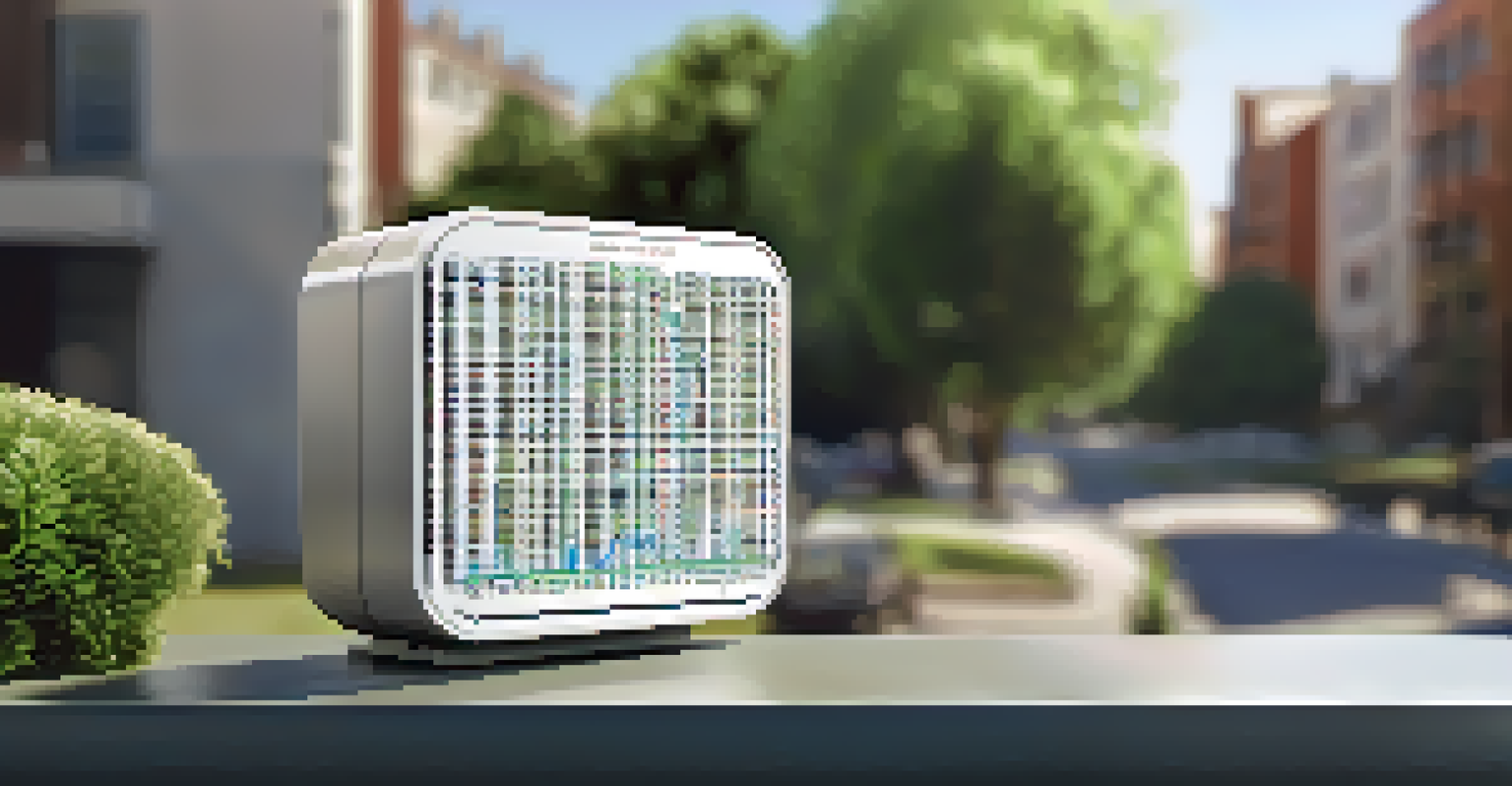Air Quality in Los Angeles: Climate Change and Pollution

The State of Air Quality in Los Angeles Today
Los Angeles has long been notorious for its air quality challenges. Factors such as vehicle emissions, industrial activities, and geographical features contribute to this issue. Despite improvements over the years, smog and particulate matter still pose significant health risks to residents.
The greatest threat to our planet is the belief that someone else will save it.
The city frequently experiences poor air quality days, particularly in the warmer months when temperature inversions trap pollutants close to the ground. With millions of vehicles on the road, the demand for clean air is more urgent than ever. Residents are continually reminded of the importance of monitoring air quality for their health.
State and local agencies work tirelessly to combat these issues, implementing measures like stricter emissions standards. However, the battle against air pollution is ongoing, and the effects of climate change are complicating these efforts.
Understanding Climate Change's Role in Air Quality
Climate change is not just an environmental issue; it has direct implications for air quality in urban areas like Los Angeles. Rising temperatures can exacerbate the formation of ground-level ozone, a major component of smog. As the planet warms, we can expect more extreme weather patterns that can further degrade air quality.

Increased heat can lead to longer wildfire seasons, which contribute to poor air quality through smoke and particulate matter. For a city like Los Angeles, surrounded by nature and urban sprawl, this poses a unique challenge. The interplay between climate change and localized pollution creates a complex web that is difficult to untangle.
Air Quality Challenges Persist
Los Angeles faces ongoing air quality issues due to vehicle emissions, industrial activities, and climate change effects.
Addressing climate change is essential for improving air quality. As we move towards cleaner energy sources and adopt more sustainable practices, we can hope for a healthier atmosphere.
Sources of Pollution in Los Angeles
Pollution in Los Angeles stems from various sources, each contributing to the city's air quality woes. Transportation is a leading culprit, with millions of cars and trucks emitting harmful gases daily. Add in construction, industrial emissions, and even household activities, and it’s clear that pollution is a multifaceted problem.
What we are doing to the forests of the world is but a mirror reflection of what we are doing to ourselves and to one another.
One significant source of air pollution is the Port of Los Angeles, which is among the busiest shipping ports in the world. Diesel emissions from trucks and ships contribute heavily to local air contamination. This heavy traffic not only affects air quality but also has health implications for nearby communities.
Agricultural activities in the surrounding areas also play a role, producing dust and other pollutants. The cumulative effect of these sources creates a challenging environment for residents, emphasizing the need for comprehensive pollution control strategies.
Health Impacts of Poor Air Quality
The health implications of poor air quality in Los Angeles are serious and wide-ranging. Long-term exposure to polluted air can lead to chronic respiratory conditions, cardiovascular diseases, and even premature death. Vulnerable populations, including children and the elderly, are particularly at risk.
In addition to physical health, mental health can also be affected by air pollution. Studies have shown links between poor air quality and increased anxiety and depression. As air quality fluctuates, so too does the well-being of the community.
Health Risks from Pollution
Poor air quality in the city leads to serious health problems, particularly for vulnerable populations like children and the elderly.
This reality highlights the importance of public health initiatives aimed at improving air quality. Raising awareness and encouraging individuals to take action can lead to healthier lifestyles for all Angelenos.
Efforts to Improve Air Quality in Los Angeles
In recent years, Los Angeles has implemented numerous initiatives to combat air pollution. The city has invested in public transportation, encouraging residents to opt for buses and trains instead of personal vehicles. These efforts not only reduce emissions but also contribute to a more sustainable urban environment.
Additionally, local governments are promoting electric vehicles and establishing charging stations throughout the city. By making cleaner transportation options more accessible, the aim is to significantly cut down on harmful emissions. This push for innovation is a step towards cleaner air.
Community engagement is also crucial in these efforts. Programs that educate residents about air quality and provide resources for reducing personal emissions are essential for making lasting change.
The Role of Technology in Monitoring Air Quality
Advancements in technology have revolutionized how we monitor air quality in Los Angeles. Real-time air quality sensors are now more affordable and accessible, allowing residents and officials to track pollution levels more effectively. This data can inform individuals when it's best to stay indoors or take precautions.
Mobile applications have also emerged, helping users stay informed about air quality in their immediate surroundings. These tools empower residents to make informed decisions about their activities based on current conditions. Awareness is key in minimizing exposure to pollutants.
Community Efforts for Improvement
Local initiatives focus on promoting public transportation and electric vehicles to reduce emissions and enhance air quality.
Moreover, technology plays a role in research and policy-making. By analyzing air quality data, scientists and policymakers can better understand pollution patterns and implement more effective regulations.
Looking Ahead: The Future of Air Quality in Los Angeles
The future of air quality in Los Angeles hinges on continued efforts to combat pollution and adapt to climate change. As awareness grows, so does the potential for community-driven initiatives that can make a difference. It's essential for residents to engage in discussions about air quality and advocate for sustainable practices.
Innovations in technology and clean energy will play a pivotal role in shaping a healthier environment. With ongoing investments in public transportation and electric vehicles, Los Angeles can transition towards a cleaner future. The goal is to ensure that future generations can enjoy the benefits of cleaner air.

Ultimately, improving air quality is a shared responsibility that requires collaboration between citizens, businesses, and government agencies. Together, we can work towards a healthier Los Angeles, where everyone can breathe easier.